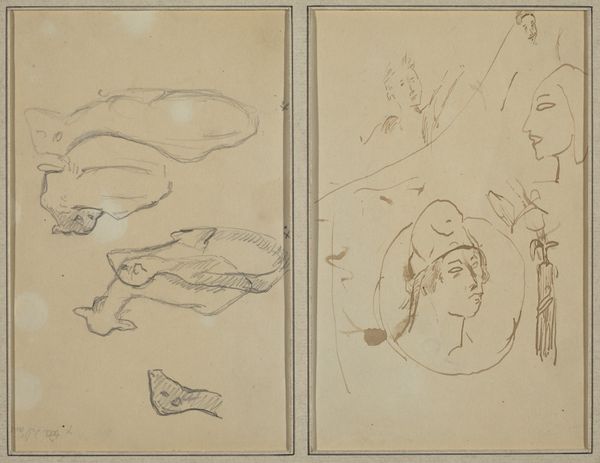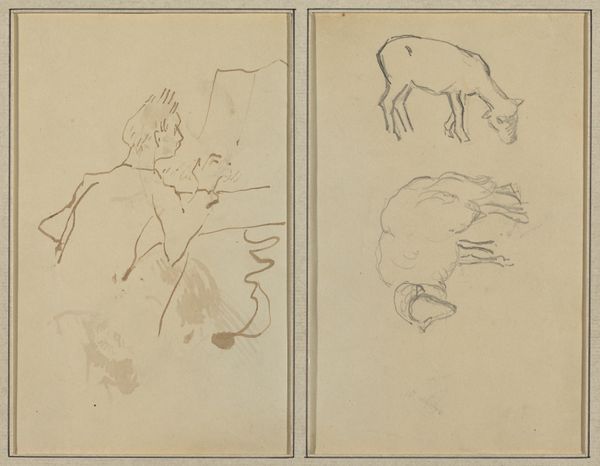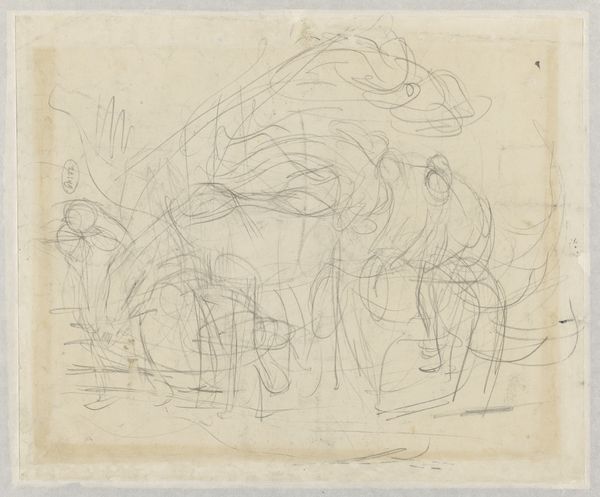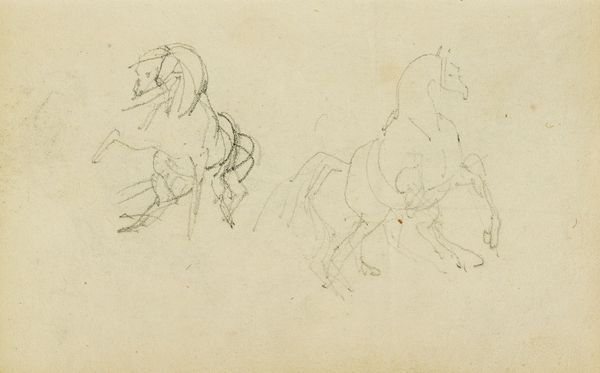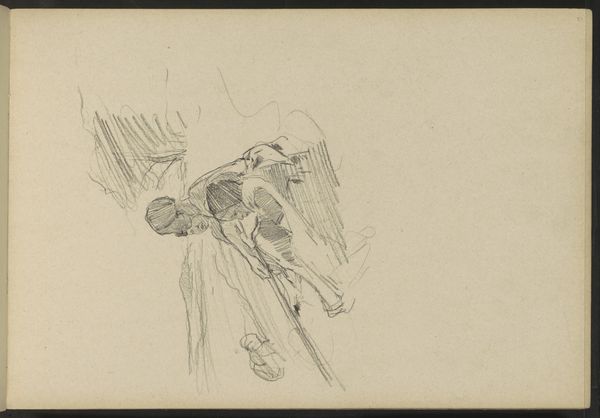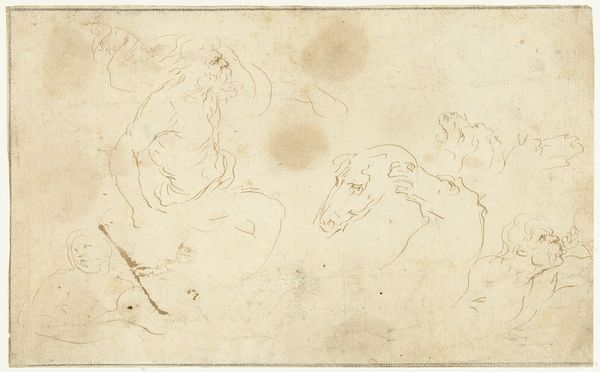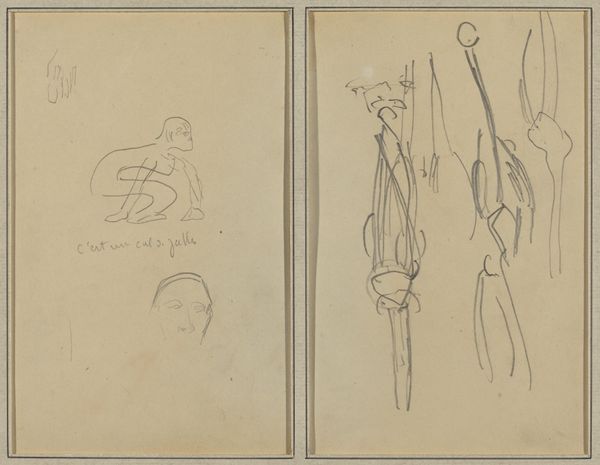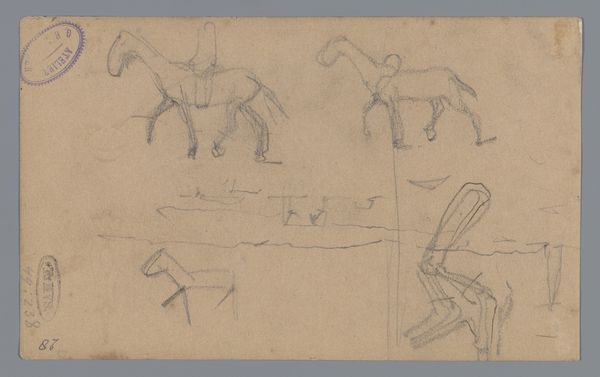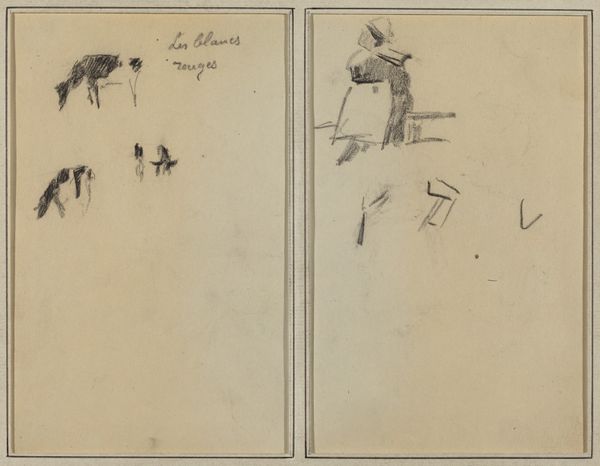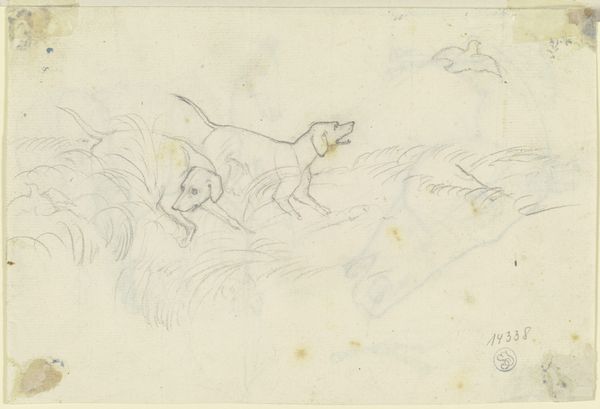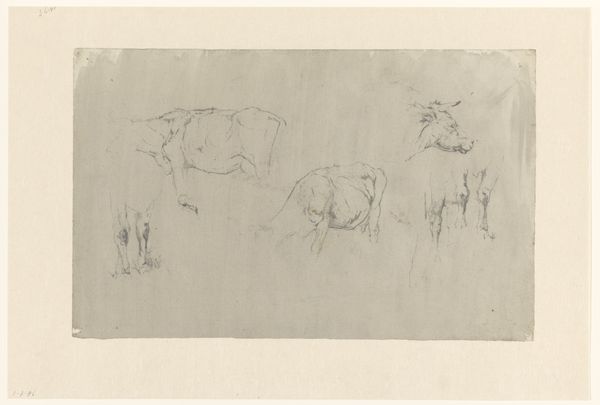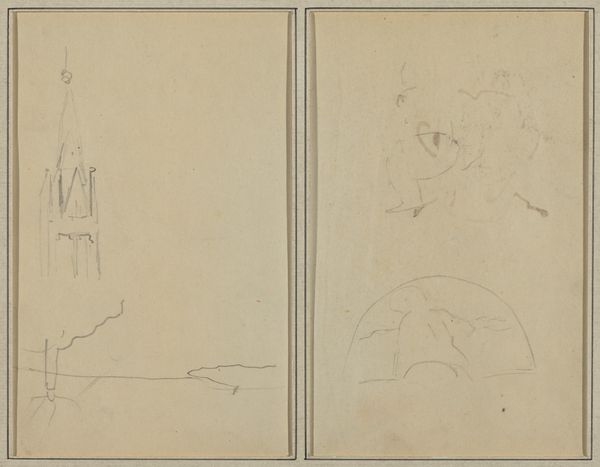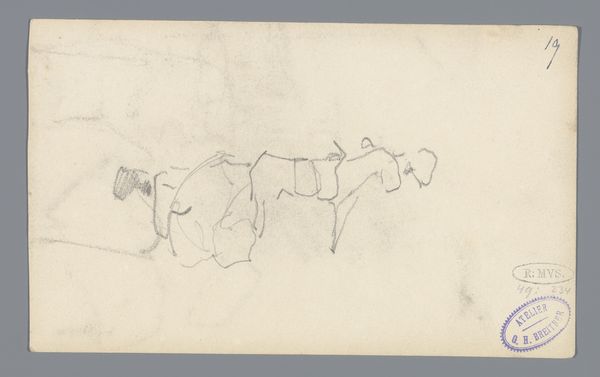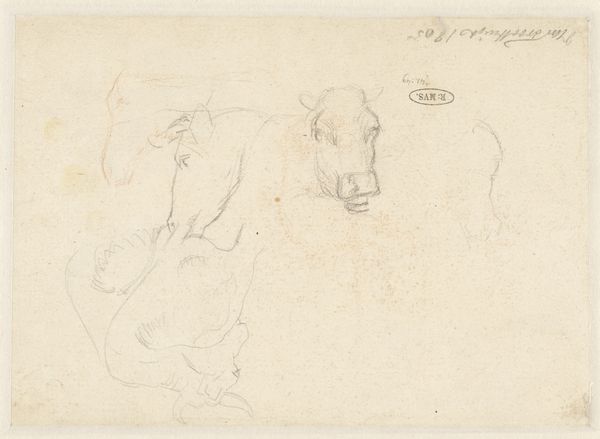![A Pig; Breton Peasant Kneeling [verso] by Paul Gauguin](/_next/image?url=https%3A%2F%2Fd2w8kbdekdi1gv.cloudfront.net%2FeyJidWNrZXQiOiAiYXJ0ZXJhLWltYWdlcy1idWNrZXQiLCAia2V5IjogImFydHdvcmtzLzBkOWQzN2MwLWI5MjQtNDkwNC1iMzdjLTk0OWNjMTEzNjJhNi8wZDlkMzdjMC1iOTI0LTQ5MDQtYjM3Yy05NDljYzExMzYyYTZfZnVsbC5qcGciLCAiZWRpdHMiOiB7InJlc2l6ZSI6IHsid2lkdGgiOiAxOTIwLCAiaGVpZ2h0IjogMTkyMCwgImZpdCI6ICJpbnNpZGUifX19&w=3840&q=75)
drawing, pencil, pastel
#
drawing
#
impressionism
#
pencil sketch
#
landscape
#
figuration
#
pencil
#
genre-painting
#
pastel
Dimensions: overall: 16.9 x 22.4 cm (6 5/8 x 8 13/16 in.)
Copyright: National Gallery of Art: CC0 1.0
Curator: This piece is attributed to Paul Gauguin, created between 1884 and 1888. It’s a double-sided drawing, featuring a pig sketch on one side and a Breton peasant kneeling on the other, executed in pencil and pastel. Editor: It has an immediacy, almost like a fleeting glimpse into the daily life of rural Brittany. The pig is just captured, a kind of earthy essence. Curator: Gauguin, even during this period, was increasingly interested in depicting rural life as authentic and unspoiled, often romanticizing peasant cultures as a reaction to industrialization. Editor: It strikes me that even the medium supports this ideal – the spontaneity of the sketchiness underscores that supposed unspoiled quality, almost erasing its social realities in a way. Curator: Right, the pig could easily become a symbol, embodying natural instinct or even societal ‘grubbiness’ that the bourgeois classes tended to impute on peasantry. I wonder how he intended for us to read it – critiquing the animalistic stereotype or furthering it? Editor: Considering the composition and subject together, one can analyze this dual piece using ideas from cultural studies and feminist theories, maybe in order to better understand representations of marginalized groups and challenging art-historical perceptions that may obscure Gauguin’s true intentions, which might, perhaps, lie on depicting working Breton women and rural fauna alike within societal structures and systems. Curator: Exactly. By positioning a humble pig opposite a kneeling peasant woman, Gauguin perhaps compels us to consider the dignity – or lack thereof – assigned to labor and life outside the urban elite. It also raises the specter of human/animal relation at that time. Editor: There’s definitely tension there. One cannot ignore the institutional structures of art historical value that frame our understanding of Gauguin, or how this image participated or diverted in defining that imagery. Curator: Ultimately, works like these invite us to look closer not only to their immediate images, but their impact through art's trajectory in culture and time. Editor: True. A seemingly quick sketch offers such layered insights.
Comments
No comments
Be the first to comment and join the conversation on the ultimate creative platform.
